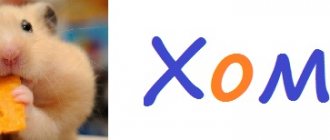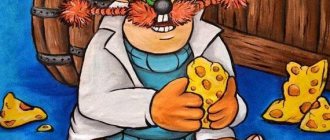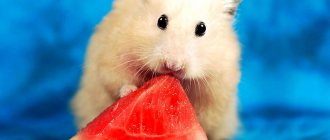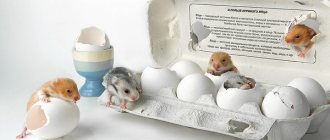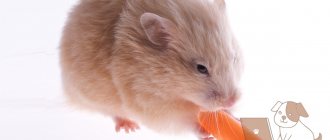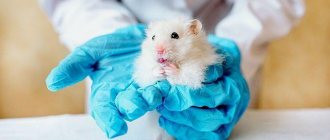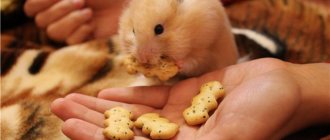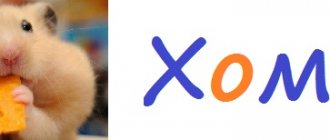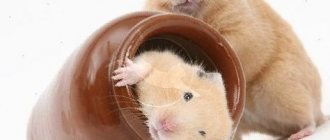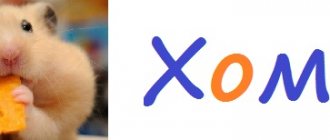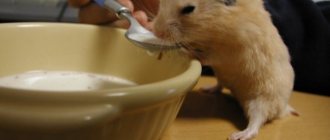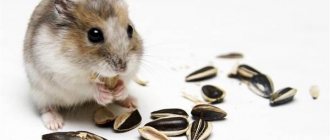- home
- Nutrition
07.03.2018
Beetroot as complementary food for rodents. Its beneficial qualities, quantity and frequency with which you can feed hamsters. Which is better to give for dzhungariki, boiled or raw.
The hamster is an omnivorous rodent, but its gastrointestinal tract is structured differently than that of humans. Many of the foods in the human diet may be unsuitable for him and cause harm. One spoiled piece is enough for the hamster to have digestive problems, which leads to diarrhea and other disorders. This is a fairly common vegetable, rich in vitamins, which are perfectly preserved in winter. But we need to figure out whether hamsters can eat beets.
Benefit
The benefits of radishes are undeniable. It contains microelements such as phosphorus, calcium, magnesium, sodium, iron, natural fiber, B vitamins and vitamin C. The value of the product for the rodent’s body lies in its following properties:
- Thanks to the vitamin C it contains, it strengthens the immune system and helps the animal’s body fight colds. In the spring-autumn period, the root vegetable can be given as a prevention of vitamin deficiency.
- Be sure to pamper your pregnant female with this delicacy, because during pregnancy her body needs additional vitamins and minerals. For example, folic acid contributes to the proper intrauterine development of babies.
- Moderate consumption of the product has a positive effect on the functioning of the animal’s cardiovascular system.
- It has choleretic properties and effectively cleanses the liver.
- Normalizes metabolism.
- Improves blood circulation.
- Prevents the development of diabetes. This disease is common among hamsters.
- The root vegetable is rich in fiber. For animals suffering from constipation and bloating, the product is simply irreplaceable.
- It is useful for rodents with excess body weight, as it contains a minimal amount of calories, only 15 per 100 g. Improves metabolism and removes toxins.
- Pectin, which is part of the vegetable, helps cleanse the animal’s body of toxins.
- It is known that animals in old age often lose their appetite; mustard oil contained in the vegetable helps awaken the appetite.
With so many positive properties of radishes, the question arises: is it possible to give hamsters the root vegetable in large quantities? And how often? It turns out that it also has contraindications.
How to give?
Beets do not lose their beneficial properties when cooked. In what form you give it to your pet, raw or boiled, will depend only on his preferences. Also, beets in different forms can cause different reactions in the body. For example, a raw vegetable is more likely to have a laxative effect than a boiled one.
Raw
Before feeding beets to your dog, they must be thoroughly washed and cut into small pieces or grated. Before serving, add a small piece of butter, as animal fats help vitamins to be better absorbed.
Also, finely grated vegetables can be mixed with porridge, other vegetables, meat, cottage cheese or sour cream.
Boiled
Boiled or steamed beets are better absorbed by the animal's body. In addition, it is easier to introduce it into the diet, since most often pets prefer boiled vegetables.
It is not recommended to give your dog fried or baked beets, as this may adversely affect the functioning of the pancreas. Boiled beets can be given separately or added to the main feed.
Leaves (tops)
Beet tops contain no less useful substances than the root vegetable itself. It can also be added to any food, after finely crumbling it.
It is not recommended to feed your pet store-bought tops, as they may contain large amounts of nitrates. For animal feed, it is better to purchase beets with tops from private traders or, if possible, grow them yourself.
Pulp (pulp, pulp)
Pulp (pulp, pulp) is a natural plant fiber obtained after processing beets and extracting sugar from them. It is added to almost all dry dog food, as it is a source of fiber necessary for normal digestion of the pet.
In addition, the pulp promotes the production of beneficial bacteria and fatty acids in the dog's intestines. Unlike root vegetables, it does not cause allergic reactions (flatulence, diarrhea, etc.) and does not change the color of the coat.
Beet fibers also have the following beneficial qualities:
- destroy harmful microorganisms in the intestines;
- pectin elements retain water, giving it a jelly-like form, which contributes to the normal formation of fecal matter;
- form an optimal lump of food mass, which allows the pet not to overeat.
What should you avoid?
When treating your little friend to an apple, you should not forget that it contains seeds containing a certain percentage of a strong poison - hydrocyanic acid. The apple must be cut, the core removed and given in small pieces.
If the apples are “homemade”, they can be given with the peel. Store-bought ones, especially imported ones, need to be cleaned
, since they are treated with wax and other solutions to preserve their presentation.
Did you give the baby a few pieces? Make sure that they do not remain in his cage “for later.” Cut apples quickly deteriorate and begin to rot, at the same time “contaminating” the rest of the food, and the rodent can simply become poisoned.
If you are used to storing apples in the refrigerator, do not give them to your pets as soon as you take them out. Warm it under hot water or let it sit in the room for a while
, because cold food is also bad for hamsters.
What happens if an animal eats a forbidden vegetable?
If an animal develops symptoms such as apathy, loss of appetite, cramps or diarrhea, then it may have eaten a prohibited product.
In this case, first aid must be provided. You can give your animal activated charcoal and take it to a veterinary clinic. The sooner the owner detects the disease, the greater the chance of saving his pet. In order not to harm your pets, it is important to prepare beets correctly. To do this, you must adhere to the following rules:
- do not add spices and salt to the water;
- do not cook beets for a long time;
- do not keep in water after cooking, as nitrates accumulate;
- Cool the vegetable as soon as possible;
- Store boiled beets in the refrigerator.
When raw, beets should be clean, without traces of rot or mold. It is necessary to remove leftover food in a timely manner to prevent poisoning. All this also applies to beet tops. In addition, beet leaves cannot be stored raw, as after 18 hours they begin to accumulate nitrates.
If you find an error, please select a piece of text and press Ctrl+Enter.
Is it possible to offer raw and cooked vegetables?
It is allowed to introduce root vegetables into the diet of some animal species.
For dogs
Can dogs eat beets? It can and even should be given to dogs, but with caution. Beetroot is a very strong allergen and if an animal has an allergic reaction (metiarrhea, diarrhea, discoloration of urine and feces), then you will have to stop consuming the product once and for all! Reference! There is an opinion that beets can affect the color of an animal’s coat and increase its brightness
If this benefits red dogs, white dogs may turn yellow, and black dogs may turn brown.
Reference! There is an opinion that beets can affect the color of an animal’s coat and increase its brightness. If this benefits red dogs, white dogs may turn yellow, and black dogs may turn brown.
Dogs can eat it both raw and boiled.
Raw meat must first be peeled, cut into strips or grated. If the animal refuses to eat such a delicacy in its pure form, then you can mix it with cottage cheese or add it to meat.
Boiled beets do not lose their properties and become even more useful. It can be given if the pet refuses to eat the vegetable raw. Offer your dog pure beets, add them to porridge or mix them with meat.
To ensure that the fat-soluble vitamins contained in beets are better absorbed, add a little butter to your food.
Hamsters
Can hamsters eat boiled and raw beets? For hamsters, beets are a controversial food item. It is believed that it not only does not bring anything good to small rodents, but also has a negative effect on them.
If you still want to pamper your hamster with a cooked or raw treat, then do this no more than several times a month. More frequent use can provoke allergies and the development of diarrhea, which obviously will not benefit the fluffy.
Rabbits
How to introduce red beets into the diet of rabbits? Rabbits need to introduce this food product into their diet gradually. This is the only way to avoid negative consequences. Starting from one month of age, you can begin to offer your rabbit beets, but not more than 25 grams. If the stomach reacts well, then the portion can be increased to 50 grams. For a two-month-old rabbit, the permissible amount is 100 grams of root vegetables, for a three-month-old rabbit – 150 grams, for an adult – 300 grams. The daily dose should be divided into several doses.
Is it possible to feed decorative and dwarf rabbits with red beets or not? Dwarf and decorative rabbits should not be given table red beets.
But feed and sugar can be safely introduced into the diet, but this must also be done carefully
Important! Boiled root vegetables are digested much better than raw ones. That is why it is recommended to start consuming it in this form. You can find out whether beets are allowed for rabbits in the video:
You can find out whether beets are allowed for rabbits in the video:
Budgerigars
Vegetables are very important in a parrot's diet, and beets are an incredibly healthy food for them. The root vegetable must be given to miniature birds, peeled and only in its raw form.
Kuram
Beets are an inexpensive and readily available addition to the chicken diet. It is not only useful, but also necessary for the bird. How to give chickens red boiled beets? It should be given in small portions, because in large quantities the root vegetable can cause digestive problems.
Birds love this delicacy very much and after eating it they behave more actively and gain weight well. Can chickens eat red beets, boiled or raw? You can feed them raw and boiled, pre-chopped beets.
Guinea pigs
Can guinea pigs eat raw and cooked beets? The root vegetable is an indispensable food product in their diet. Guinea pigs very willingly eat raw, boiled, dried beets and receive many vitamins. Guinea pigs love beet juice. It can be mixed with feed, bran and grain. You can try the root vegetable for the first time at the age of two months.
Attention! Despite all the positive aspects, a large amount of treats can cause diarrhea. To avoid this, give an adult no more than 100 grams of beets per day.
Cats
Can cats eat beets? A cat's diet should be balanced and healthy. Beetroot has undoubted benefits for the animal's body, but it is better not to give it raw as it can cause stomach upset. Sometimes offer your cat boiled root vegetables. This will help get rid of urolithiasis. Many specialized feeds contain beet pulp, which is also very healthy. In addition, the animal can be given juice and beet puree.
Features of feeding different breeds
Djungarian and Roborovsky hamsters are small. Accordingly, their feeding will be different: portions are smaller than for larger breeds, caution increases. The body of dwarf hamsters is even weaker than that of larger hamsters.
They are prone to diabetes, so sugar beets are contraindicated both raw and boiled. The baby can easily eat other varieties of this vegetable, however, the portion of the root vegetable should not be larger than the nail on the little finger. Just like other hamsters, dwarf hamsters should not be given this treat often. 1-2 times a week will be enough.
Syrian hamsters are larger in size. Not much, but still. These rodents can be given any variety of beets. But don't forget that everything is good in moderation. It is very important not to overfeed your hamster with beets - they have a laxative effect, which can cause diarrhea.
If you have your own garden, you can even please your pet with beet tops. You need to wash it well first so that there is no dirt left on it. However, caution must be exercised here as it is unknown how the hamster’s body will react to this. Give some tops and watch. If the pet likes it and everything is in order with health, then you can safely feed the tops as a variety of diet.
Pregnant hamsters should be given beets once a week, no more. It is better to exclude the sugar variety, because it can adversely affect the development of the fetus.
Root vegetables (potatoes, beets, carrots)
Some of them are necessary for the animal every day, others only occasionally
It is also important in what form the rodent receives this or that vegetable. The basic principle is the same as in human nutrition: the less heat treatment a product is subjected to, the more nutrients it retains.
Potato
Veterinarians clearly agree that the vegetable is not recommended for a hamster due to its high starch content. In small quantities, you can occasionally pamper your pet with them - it is acceptable to offer him raw or boiled potatoes, but not fried ones.
Beet
This vegetable is not recommended, but it is occasionally given fresh or boiled to Syrian hamsters. The cube should be no larger than a button, and they start with even smaller sizes in order to track the reaction of the gastrointestinal tract. If tolerance is normal, the portion is increased.
Carrot
It is not only possible, but must be given to the hamster; it is an essential ingredient in the daily diet. A mug 1.5 cm thick is enough for one approach - no more is needed, otherwise the rodent will start making supplies that will quickly spoil.
The best option is to treat your hamster with raw carrots; sometimes it is permissible to diversify the menu with boiled carrots. In addition to vitamins A, C, K, it is rich in dietary fiber, which is beneficial for digestion, and potassium for the heart muscle.
Sometimes you can put 1 tablespoon of carrot tops in the animal’s bowl - it contains 5 times more vitamins than the root vegetable. But not from a store-bought vegetable - its above-ground parts are often treated with pesticides against pests, which is fatal to the rodent. If it is not possible to treat your pet to greens from your dacha, it is better to buy parsley, celery or lettuce at the supermarket - they are safer for your pet.
Radish
Recommended in small portions 1-2 times a week. Give preference to country vegetables or vegetables grown in your own beds. They contain folic acid, which is especially important for pregnant females; they effectively cleanse the liver and normalize the flow of bile. Pectin cleanses the body of toxins, and its low calorie content makes radishes a dietary product.
The root vegetable is useful in all respects, especially for Syrians prone to arthritis - turnips contain substances that protect joints from inflammation. Helps with osteoporosis, serves as a source of potassium and calcium for bones.
Nuts that should not be given to hamsters
Almonds are poison for a hamster. It contains hydrocyanic acid, which causes severe intoxication, affects the nervous system and causes oxygen deficiency in the brain. As a result, the hamster may die.
Brazil nut is an extremely heavy and fatty food that is not absorbed by the body. Plus, the nut contains microelements that are toxic to rodents.
Acorns are also dangerous for hamsters; they contain too much starch, sugars, fatty oils and tannins.
They lead to difficulties not only with digestion, but also with urination. The most dangerous fruits are harvested in September; they cause poisoning and infections.
The grains of plums, apricots and peaches are poisonous to hamsters.
Potato damage
When potatoes are stored for a long time, solanine accumulates in them. This is a toxic substance that is found in greened tubers, as well as stems and leaves. Solanine depresses the nervous system and leads to digestive upset. Solanine is toxic to both humans and animals. If you plan to give potatoes to your hamster in the winter, you should cut off not only the peel, but also part of the tuber itself, leaving only the core.
There are versions that chlorophyll, which is formed under the influence of sunlight, can also be toxic. It does not collapse even when cooked. Although other studies suggest that chlorophyll can remove toxins and cleanse the body.
In addition, potatoes have a high glycemic index. This means that eating potatoes can increase blood sugar, which leads to diabetes. Diabetes is most common in dwarf hamsters and less common in Syrians. If your pet has signs of obesity, increased thirst and other symptoms of diabetes, then you should exclude potatoes from his diet.
We create the “correct” diet for the Djungarian hamster
The food that is suitable for feeding the dwarf at home is practically no different from the food that it obtains in its natural environment, that is, in the wild.
Cereals, nuts
So, the most common food for Djungra hamsters are cereals, namely:
- buckwheat;
- Hercules;
- wheat;
- barley;
- legumes (peas, beans, beans, lentils).
You can even prepare food for your Djungarian hamster at home by mixing all of the above products in equal proportions.
Sunflower, melon or pumpkin seeds are often used as an additive. But if for some reason you do not have the opportunity or time to prepare food for your pet, then you can purchase a ready-made cereal mixture at any specialized store.
Such domestic rodents as dzhungariki do not refuse nuts, which, by the way, are very beneficial for the body of fluffies. Therefore, experienced zoologists strongly recommend introducing nuts such as cashews, hazelnuts, chickpeas, walnuts, and even sesame seeds into the daily diet of hamsters.
Greenery
Now let's talk about fresh greens, without which hamsters cannot fully develop. Of course, in late autumn, winter and early spring it is extremely difficult to enrich the diet of a furry friend with such food (if you do not grow greens at home), but what prevents us from introducing greens into the pet’s menu at other times of the year?
Tasty alternative
Don't be upset if for some reason you can't provide your pet with carrots. As for vegetables, there is a complete variety for rodents! They can eat peppers, zucchini, eggplant, cucumbers, radishes, beans, pumpkin, squash, cauliflower, broccoli, radish, and corn. The list of permitted products can be very long, so it’s easier to concentrate on the dangerous ones.
It is not advisable to feed rodents white or red cabbage, potatoes, sorrel, and garlic. Also dangerous can be pits from food and any plants grown in environmentally polluted conditions, such as cities, near roads.
What else can Djungarian hamsters eat?
- Fruits (not exotic, but “local”) - eat no more than a couple of times a week, preferably 1.
- If your dry food does not contain greens, you can add them to the diet (dried).
- Non-starchy vegetables (cabbage, cucumber, bell pepper) - can be eaten almost every day, alternating.
- Low-starch vegetables (zucchini, carrots, pumpkin) - it is enough to feed them to the dwarf 2 times a week.
- Protein – 1-2 times a week.
- Nuts, seeds - try to give them less often, as a treat (high fat content of the product).
The main emphasis in nutrition is on grains.
What fruits and berries can hamsters eat?
Fruits for the Djungarian hamster should not be too sweet (remember about diabetes!). It is for this reason that you should not feed the dzhungarik exotic foods at all. Occasionally, you can give a dried banana, but not more than once a week (formally, a banana is a berry, but that’s what we’re used to).
Be sure to remove large seeds and pits from the fruit. Many of them can be poisonous to the dwarf. The possibility that such a baby will simply choke on the seeds cannot be ruled out either.
Follow the same recommendations when choosing berries.
Lifehack. Use glycemic index tables for foods. Those with a high indicator should never be fed to the Djungarian hamster.
A few words about dried fruits. These are the same fruits, only the water has been removed from them. The composition remains virtually unchanged; we feed according to the same principles as fresh fruit.
Choose fruits that are as sweet as possible for your pet.
What vegetables can dzungaria eat?
Vegetables have the same problem - they increase the risk of diabetes. Here we are no longer talking about sweets (fructose), but about starch, which “works” in the same way as fructose or sugar - it increases the level of glucose in the blood.
Therefore, try to feed your hamster vegetables that are low in starch and high in fiber (cabbage is an ideal example).
The less starch in vegetables, the better.
What do hamsters prefer from greens?
For greens, let's eat your usual salad, parsley and dill (1-2 times a week). From “improvised” (more precisely, pasture) plants, you can feed plantains and dandelions. Greens are a storehouse of vitamins, microelements and nutrients for the Djungarian rodent, do not neglect them.
Avoid greens that have a strong smell or taste. Those. any plants that have an imbalance in composition (too many essential oils or acids). That is why it is strictly forbidden to feed the Djungarian hamster with onion sprouts, garlic and sorrel.
Don't forget about greens - very healthy.
Animal protein for the carnivorous dwarf
In its natural environment, the dzhungarik is by no means a vegetarian, and is not averse to sometimes eating what passes by. These are mainly insects. Therefore, for proper nutrition, you need to add protein foods to your hamster’s menu.
Ideal for:
- Boiled egg whites
- Skim cheese
- Boiled white fish
- Lean boiled meat of other animals (beef, chicken, turkey)
You can feed protein once a week (pregnant and lactating females, babies - more often, but we have a separate conversation about this).
I'm a predator!!! Strong!!! But easy...
What to give him to drink
The hamster should be given water with settled, unboiled water. The ideal drinking bowl is one with a ball at the end of the tube: the hamster moves the ball with its tongue and drinks the water flowing out of the tube. Open drinking bowls are not clean for more than five minutes, so it is best to avoid them.
Let's talk about such a component of a pet's diet as vegetables. It is a misconception to believe that a hamster can do anything - his digestive tract does not digest a number of vegetable crops well, and some are deadly to him. Let's look into the details: what is useful for the animal and what is not.
- Root vegetables (potatoes, beets, carrots)
- Potato
- Beet
- Carrot
- Radish
- Turnip
- Cucumbers and tomatoes
- Cucumber
- Tomatoes and cherry tomatoes
- bell pepper
- Cabbage and its varieties
- Other vegetables
- Eggplant
- Pumpkin
- Zucchini
- Finally
About fruits and berries
When treating your hamster to fruits and berries with seeds, do not forget to remove the last pieces offered to the animal! A hamster can get poisoned by treating itself to a bone, and it’s not a fact that the little greedy one can be saved... In addition, sweet fruits and vegetables should not appear in the diet of dwarf hamsters - many of these animals have diabetes (even if it has not yet given you know, this doesn’t mean that it doesn’t exist!), and it’s much safer to keep them on a special diet, avoiding sweets. Apples should not be given to hamsters under two months of age due to the risk of developing ascites. I personally don’t recommend giving your hamster a pear – it “weakens” you. In addition, the pear is too sweet, and many of its varieties spoil very quickly, so the hamster can be poisoned by an uneaten piece of the fruit. Apricots, plums, cherries, cherries can be given, but in very small quantities, and apricots and plums - only fresh (the sugar content in dried fruits is too high, so they cannot be given). Peach is a no-no, it is too sweet and spoils too quickly... Compared to the harm it can cause to a hamster, its benefits and pleasant taste seem insignificant. Watermelon and melon should not appear within the hamster's reach at all! And the point is not only that they are very sweet and quickly become unusable. They are so watery that people often suffer from poisoning from nitrates and heavy metals accumulated in watermelons and melons. And for a hamster to die from poisoning, a much smaller dose of these toxic compounds is enough... You can treat your hamster to small strawberries and wild strawberries - many animals adore them. But you should be very careful with raspberries - they “weaken” you, so it’s better not to give them at all
You should not treat your hamster with sour berries (for example, sea buckthorn or barberry) - excess acid will definitely not be beneficial for the animal! It is believed that you can treat your hamster to grapes, but you should be extremely careful with them: the berry should be small, not under-ripe and not fermented. In addition, it is better to immediately remove and throw away a half-eaten grape than to allow it to rot safely in the hamster’s pantry, simultaneously ruining its other supplies and allowing the animal to be poisoned
What do hamsters eat in the wild?
The diet of the Djungarian hamster, which forages in the Asian steppes and deserts, is quite varied. It includes both succulent and dry food. Wild Djungarian hamsters have to find their own food, because they do not have caring owners who are ready to take them under their care. Rodents usually try to stay away from people, but sometimes they raid farmland. Thus, wild dwarfs feed on:
- grains of cereal plants. These include wheat, oats, corn, barley, rye and many others. In summer and autumn, when the ears lie down, the Djungarian hamster stores grains;
- sunflower seeds;
- vegetables, which include zucchini, eggplant, cucumbers, etc.;
- carrion. Wild dwarfs love to eat fruits falling from trees. They feast on apples, peaches, and rose hips. Their diet also includes berries - grapes, currants, blackberries, etc.;
- grass. Juicy herbs of various types are an integral part of hamsters’ diet;
- small invertebrates. Sometimes fluffies feast on snails and slugs. This food has a lot of protein. Moreover, Khoma is not embarrassed when he sees a mollusk shell; he easily chews it.
Homemade food for hamsters should be similar to what they eat in the wild.
Can hamsters eat cereals: rice, barley, buckwheat, wheat, lentils, peas, rolled oats, beans?
Yes, hamsters can eat these cereals, it is a fairly natural food for them. Most cereals contain many complex carbohydrates and are rich in vitamins and minerals, so they can be added to your pet’s daily diet, either dry or boiled (without salt or spices).
Yes, hamsters can eat sunflower seeds and pumpkin seeds. In the wild, hamsters are known seed gatherers and eaters, so it makes sense to make sure they have some seeds in their diet. Pumpkin seeds have a hard shell and large kernels and contain many nutrients that will benefit your pet hamster.
Dwarf hamsters may have a problem with such large seeds. Feed your pet pumpkin or sunflower seeds every few days as a treat to prevent them from becoming overweight. Dwarf hamsters can also develop diabetes if they are obese. Other seeds that hamsters love are flax seeds, wheat seeds and sesame seeds.
We suggest you read: From what months can you give your baby beets?
Hamsters and carrots
A good, balanced diet for a hamster includes commercial kibble, fresh vegetables and fruits and sometimes nuts or eggs, and plenty of water. Because hamsters typically breed and mature very quickly, they require a lot of vitamins and minerals from their diet.
In particular, it's worth noting that vegetables high in vitamin A and vitamin C are definitely an important consideration. Carrots contain about 4 mg of vitamin C per 100 g of raw carrots. That's quite a lot! It is an important antioxidant that fights dangerous diseases and keeps your furry friend happy and healthy.
Carrots are also a good source of vitamin A, carbohydrates and minerals such as calcium and magnesium, which are important for your hamster's health.
The third stage is “transitional” age
The first feeding of such food should be under human supervision, since babies may choke on unusual food.
The source of protein, which is so necessary for the younger generation, will be chopped boiled chicken protein. It is too early to give yolk to babies - their stomach is not yet ready for such heavy food.
The moment has come when you can pour the grain mixture into the feeder of the “young animals”
It is very important that the food is of high quality and fresh, otherwise the first grain complementary food may be the last for the younger generation
Allowed varieties and methods of preparation
The root crop must be fresh, without traces of mold or rot! It is best if the beets are grown in your own garden and do not contain pesticides (read more about how to sow beet seeds and care for them here).
Dogs can be given small quantities of fodder and table red beets, but it is better to abstain from sugar beets.
To whom and what kind of beets is allowed to be given?
Hamsters are allowed to give beets
Offer sugar with caution (large amounts of sugar can provoke diabetes), but it is better to refrain from food, because it contains practically nothing useful for the rodent. It is not advisable to give red beets to rabbits. It is best to give preference to feed and sugar. Budgerigars can be given sugar, fodder and table beets. Chickens can be safely given fodder and sugar beets, but not exceeding the permissible daily amount.
But it’s better to be careful with red beets. The fact is that the color red has an irritating effect on animals. Once they get dirty in the juice, they can begin to react aggressively to each other or even fight. Guinea pigs can be offered any type of root vegetable and it will undoubtedly only benefit them. It is preferable to use table red beets to feed your cat.
In addition, to avoid negative consequences, the product must be properly prepared:
- cook over high heat;
- do not add salt or other spices to the water;
- do not keep it in water after cooking so that nitrates do not accumulate in the vegetable;
- Store beets in the refrigerator.
Even before our era, they knew about the healing properties of beets, although beetroot or beetroot, as this root vegetable is also called, is a completely common food product for many. Read our materials about whether this vegetable is allowed for a nursing mother during pregnancy, at what age it can be introduced into complementary foods for a baby, and whether its consumption can cause food allergies.
Possible negative consequences
If an animal has eaten beets and has a food allergy, the following reactions are possible:
- eye inflammation, lacrimation;
- sneezing, coughing and nasal discharge;
- impaired breathing;
- diarrhea, vomiting;
- the appearance of an itchy rash;
- dizziness.
Reference! The very first thing to do in case of food poisoning is to contact a veterinary clinic. Be sure to avoid further consumption of the allergen. If the symptoms are very strong, then before the doctor arrives, you can give the animal activated charcoal.
Can hamsters eat corn and in what form?
Hamsters are allowed to give corn, since this product contains a large amount of protein, various vitamins, microelements, amino acids, and various beneficial substances. At the same time, corn grains contain a small amount of fiber, which has a beneficial effect on the pet’s digestive system. Corn contains amino acids that are not produced by the hamster's body. Supplementing the diet with grain compensates for the deficiency of these elements. Due to their composition, corn kernels have a positive effect on the aging process of the body, increase muscle tone, and help prevent the development of cancer.
Corn can be given to your hamster in several forms:
The corn should not be cooked for long (no more than 15 minutes), without adding spices. After cooking, the corn kernels or cobs are well cooled so that the pet does not get burned.
Dried grains may be too hard for your pet. It is recommended to pour hot water over the grains and leave for 15 minutes to soften them. Pets eat softened grains more readily.
It is prohibited to give canned corn to animals. When preserving, elements harmful to the animal’s body are added to the product - sugar, salt, herbs, spices. Animals should also not be given any other canned food.
Dzungarians and Syrians can be given home-cooked popcorn as a treat. One piece will be enough for the animal. Cooked popcorn should also be well cooled before feeding to the rodent. No additional ingredients should be added to the product.
It is not recommended to give store-bought popcorn, as it contains sugar, salt, large amounts of fat, and other additives that are dangerous to the hamsters’ body. Many food mixtures for rodents supplement popcorn, so instead of a homemade product, you can give a special mixture. This delicacy contains more nutrients and is more convenient to use.
Another product containing corn is corn sticks. In the process of making sticks, corn grain is ground into flour, which significantly reduces the content of nutrients. Sugar, salt, and food additives are also added. The final product is harmful to the pet’s body, so you should avoid such “treats.”
Corn flakes are prepared in a similar way, so they should not be added to the animal's diet. Products containing sugar are especially harmful to Djungarian hamsters, since animals of this breed are prone to diabetes.
In stores you can find dairy-free corn porridge for baby food that does not contain gluten. Prepare the porridge according to the special instructions on the package. Porridge will be a healthy treat for the animal.
https://youtube.com/watch?v=7o7ONxROBmc
Thus, peas, beans, and corn are healthy foods necessary for a hamster. It is necessary to add such food to the animal’s diet in an approved form without additional spices, herbs, or seasonings. But it is worth remembering that you cannot limit your animal’s diet to legumes or grains alone. Feed your animals vegetables, fruits, dry mixtures, feed, and various variations of these products. Create your own “meals” from a mixture of products and offer them to your pet.
Why do we need cheese?
Procuring food for themselves, these rodents eat insects, as well as various worms and larvae, this is the source of protein for them when living in the wild. In order to compensate for the lack of protein food, it is recommended that pets add special food to their diet. It could be a bloodworm, mealworm or gammarus.
But it is worth noting that domestic rodents are not always happy to eat such food, in which case the owners try to diversify the pet’s diet with food from the table, but this is not always correct and can result in disastrous consequences for the pet, health problems, and sometimes even death . To understand whether cheese can be given to rodents, you need to understand the composition and benefits of this product.
Harmful or beneficial?
Surely, many people know that the main ingredient for making cheese is milk, but this is far from the only ingredient. Sourdough and rennet are added, as well as auxiliary ingredients, including salt, spices and much more.
Unfortunately, recently, manufacturers of this product have begun to use insufficiently good components, as a result, the quality of the cheese has decreased. Many cheeses contain products that can be harmful not only to rodents, but also to humans. The baby’s body will most likely react to an inappropriate product with indigestion.
If you are confident in the high quality of the product, you can safely offer it to your hamster.
It should be low-fat cheese. A small portion will only do you good.
Cheese fills the animal’s body with the following components:
- Protein.
- Amino acids.
- Vitamins.
- Microelements.
If you notice that your pet enjoys eating cheese, then you need to choose a quality product for him.
Which product is contraindicated?
You need to understand that many types of cheeses are very fatty. They may contain salt, seasonings and flavorings. These components are added to make the product more tasty and attractive to the consumer. This type of food is strictly contraindicated for animals.
Such food can lead to disruption of internal organs. You will be able to see for yourself that the rodent will become less active and lethargic.
